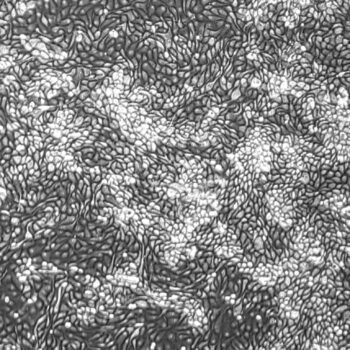
Prostate Anatomy, Prostate Cancer, and the Latest Research
The prostate is a small gland that is part of the male reproductive system. It secretes fluid that is part of the semen. Columnar epithelial cells comprise the secretory epithelium, which sits above a layer of basal epithelial cells. The prostate epithelium is surrounded by supporting stromal cells that include smooth muscle cells, fibroblasts, and other cell types. Interactions between the epithelium and the stroma are critical for proper prostate function, and disruption of either stromal or epithelial homeostasis can alter homeostasis of the other compartment.
Following lung cancer, prostate cancer is the second leading cause of cancer-related death in men. Prostate cancer, often initiated by genetic changes in the epithelium, involves both the epithelial and stromal compartments, alterations in which facilitate cancer progression. Prostate cancer that becomes metastatic often spreads to the bone, and therapies targeting this process are highly sought after.
Recent Studies Using Lifeline® Prostate Epithelial Cells
Dhandayuthapani et al. were interested in the effect of Ocimum tenuiflorum (Tulsi)—or “holy basil”—on LNCaP prostate cancer cells. This research group found tulsi extract (EET) treatment caused LNCaP cell apoptosis, evaluated using multiple assays for apoptosis. Lifeline® normal prostate epithelial cells were used as a control in this study to demonstrate that EET does not affect normal cells. Together, the results from this study suggest that in addition to multiple healing properties, tulsi may have selective apoptosis-inducing activity toward LNCaP cells.
Hudson et al. set out to discover how Wnt signaling in the bone alters metastatic prostate cancer cell invasion. They used PC3 prostate cancer cells throughout their studies, demonstrating that the Wnt signaling inhibitor, SOST, decreases PC3 cell invasiveness, while the Wnt signaling agonist, DKK1, increases PC3 cell invasiveness. Additionally, co-culture with primary osteoblasts increased PC3 invasiveness, which was further enhanced by co-culture with osteoblasts isolated from Sost knockout mice. Using gene expression analysis, the researchers found transcriptional upregulation of CRIM1 in more invasive PC3 cells under Wnt-activated conditions. Additionally, exogenous CRIM1 overexpression increased PC3 invasiveness, suggesting CRIM1 expression in prostate cancer might enhance the ability for cancer cells to invade and metastasize. The researchers used Lifeline® normal prostate epithelial cells to demonstrate that only cancer cells increased invasive potential in response to co-culture with osteoblasts.
Lifeline® Prostate Epithelial Cells and Male Reproductive Cells include:
- Prostate Epithelial Cells – optimized for growth in ProstaLife™ Medium
- Seminal Vesicle Epithelial Cells – optimized for growth in ProstaLife™ Medium
- Vas Deferens Fibroblasts – optimized for growth in FibroLife® Medium
We are always looking for new studies using our cells to share here on our blog. If you have used Lifeline® cells in a recent publication, please let us know and your study could be featured here!

 Human Renal Medullary Epithelial Cells, Primary
Human Renal Medullary Epithelial Cells, Primary